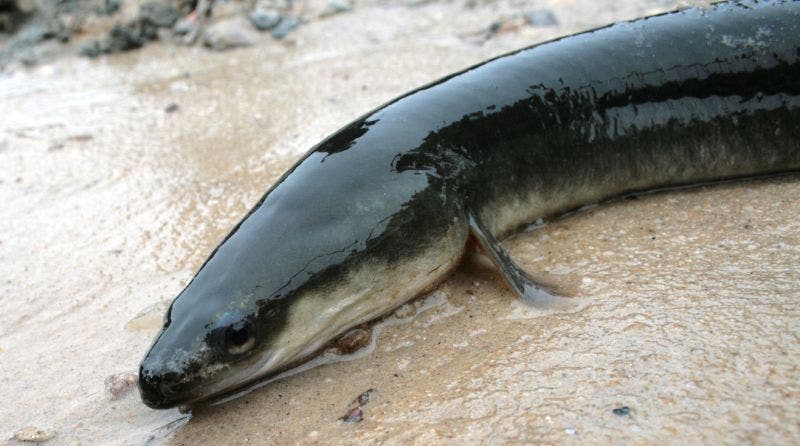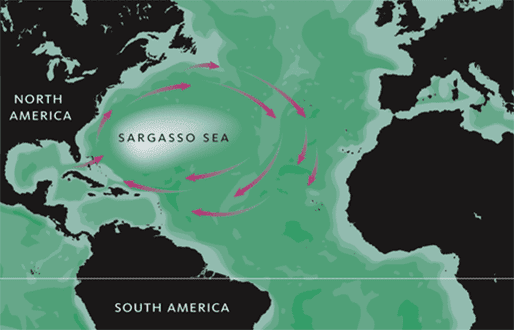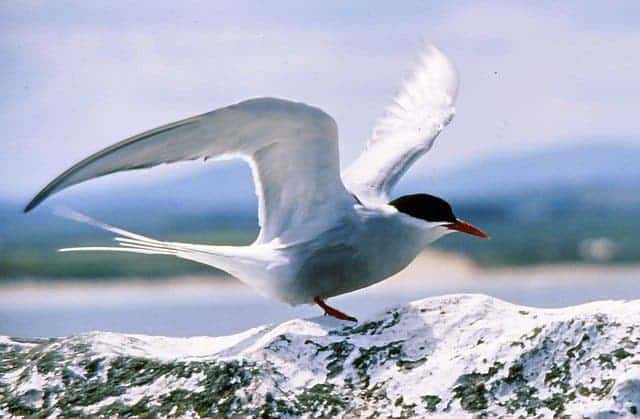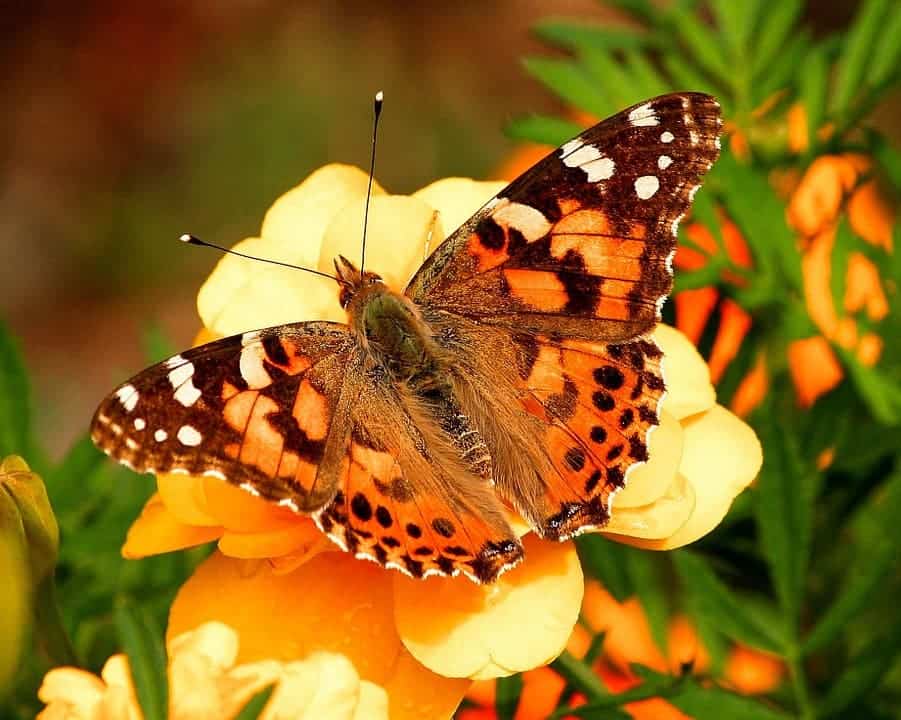Migrations are actually found in every major animal group, from birds, mammals, fish, reptiles, amphibians, insects, and even crustaceans! Migrations are relatively long-duration journeys that are often embarked upon because of seasonal climate changes, and a lack of good breeding opportunities or food in one location. They may occur seasonally or once in a lifetime. Animals that fly or swim long distances to migrate are hard to track from land. Because of this, our knowledge of these migrations has been extremely limited. However, new techniques have made it possible to study migrations that we didn’t understand at all before. Here are three stories about how technology has changed what we know about migrations:
Eels, eels
Eel migration was a complete mystery for a long time. Eel larvae were first found in the Sargasso Sea in 1904, and grown eels live in North American rivers. Eels live to around the age of 20 before they venture out to the sea to lay eggs. This migration takes so much energy that the eel dies after spawning. The baby eels need to make their way back north on their own. However, in the past hundred years no migrating eels had ever been seen, so nothing was actually known about their migration.

In 2012, Canadian scientists used satellite tags to track adult American eels (Anguilla rostrata) in their migration. They tagged 38 eels with pop-up satellite archival tags; these tracking devices cost between 900$ and 4000$ each. These tags measure water depth, temperature, and geomagnetic field intensity. Each day, the data was transmitted to the a low earth orbiting satellite system. By comparing this data with global ocean circulation models, scientists tracked the locations and migrations of the eels.
Unfortunately, there was a big problem with the tags either not working or the tagged eels being eaten by fish. Eight (of the 38) eels were tracked to the open sea. However, only one tag tracked a female down to the spawning grounds before her tag popped off. She migrated from the coast of Nova Scotia all the way down to the northern edge of the Sargasso Sea, more than 2,400 km (1,500 miles). She swam 49 km (30 miles) a day and when the sun was up descended to depths of 700 m (2,000 feet) to avoid being seen by predators. This predator-avoidance explains why migrating eels have never been seen before.

The eels exhibit a two-phase migration path: first they swim over the continental shelf and its edge through shallow waters. They may depend on salinity or temperature gradients to navigate themselves. Then in deeper waters, the eels turn due south and head directly towards the Sargasso Sea. They may have an inherited bi-dimensional map like salmon and use geomagnetic intensity and inclination angle to orient. However, right now these are just guesses.
Around the world in 133 days
Arctic terns (Sterna paradisaea) have by the far the longest migration in the world. Although migrating birds are very common (1,800 out of 10,000 bird species migrate), this bird takes it to a whole new level. It breeds in the Arctic and migrates to the Antarctic every year. Yes, you read that right, from pole to pole. This also means that these sneaky birds get two summers and receive more sunlight than any other creature on earth!

Fifty Arctic terns were fitted with geolocators on plastic leg rings to track their exact migration route in 2007. The geolocators were previously too heavy for anything smaller than an albatross, but lighter ones were engineered that were suitable for the 125g (0.3 lbs) Arctic tern. One limitation is that the birds with geolocators need to be recaptured in order to get the information. At least 20 of the birds of the tagged birds were seen but only 11 of the geolocators were retrieved in total.

The birds start at their breeding grounds in Greenland and Iceland and migrate south in two possible routes. One route goes down the coast of Western Europe and Africa and the other follows the continent of South America. The terns take their time going southward and take a break at an oceanic hotspot that was unknown prior to this study. All 11 tracked birds shared the same wintering sites in Antarctica and took the same route back North. The route is a sigmoidal trajectory that crosses the Atlantic ocean by flying around the North Atlantic gyres. The birds went north much quicker, taking only half the time as going South.
In total, a round trip for the Arctic terns is an average of 70,900 km (44,000 miles) long. Before this study, the length of Arctic tern migrations was estimated at 40,000 km (25,000 miles), so this value is actually twice as much! Because Arctic terns live for more than 30 years, they may fly more than 2.4 million km (1.5 million miles) in total. If you need a reference, that is the same as to the moon and back three times!
Ain’t no lady
Everyone has heard of monarch butterflies migrating from the USA to Mexico, but there’s a lesser known butterfly that actually migrates for longer distances. The painted lady butterfly (Vanessa cardui) isn’t as dainty as it sounds. After seeing large numbers of painted ladies in the UK, researchers wondered what happens to the butterflies when it gets cold. Some people thought that the butterflies come by accident and then all die in the winter. It turns out that they are smarter than that, and migrate south for the winter.

2009 was a record year for painted ladies, 11 million of them entered the UK in the spring and 26 million left in the fall. UK researchers used this opportunity to study their movement. They used a combination of scientific monitoring, citizen scientist reports of the butterfly, and radar technology. British observers provided over 60,000 painted lady sightings. Radar technology provided information about the density of butterflies, flight altitude, speed, and direction. Radar was used primarily to view high flying butterflies. Researchers identified objects from the radar output that matched size and shape of the butterflies as painted ladies and supplemented this assessment with visual sightings. It turns out that the butterflies travel at altitudes of over 1,000m (620 miles) but descend to take advantage of favourable winds to help them glide along. The butterflies flew at an average height of 500 m (310 miles) on their way south up to 48km/h (30miles/h).
In total, painted lady butterflies make a 14,400 km (9,000 miles) migration from Scandinavia and Great Britain to West Africa. Monarchs only migrate up to 8,000 km (5,000 miles). The painted ladies even cross a sea! They are tough ladies. It turns no single painted lady butterfly makes the whole trip; the entire journey is made by up to six different generations.
New technology has some great applications in learning more about animals that we wouldn’t otherwise know. These recent studies enlightened us on the incredible migrations of a few animals. Which animals will we learn more about next?



